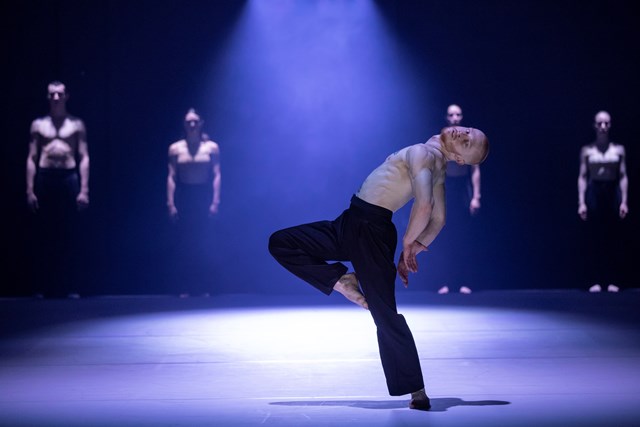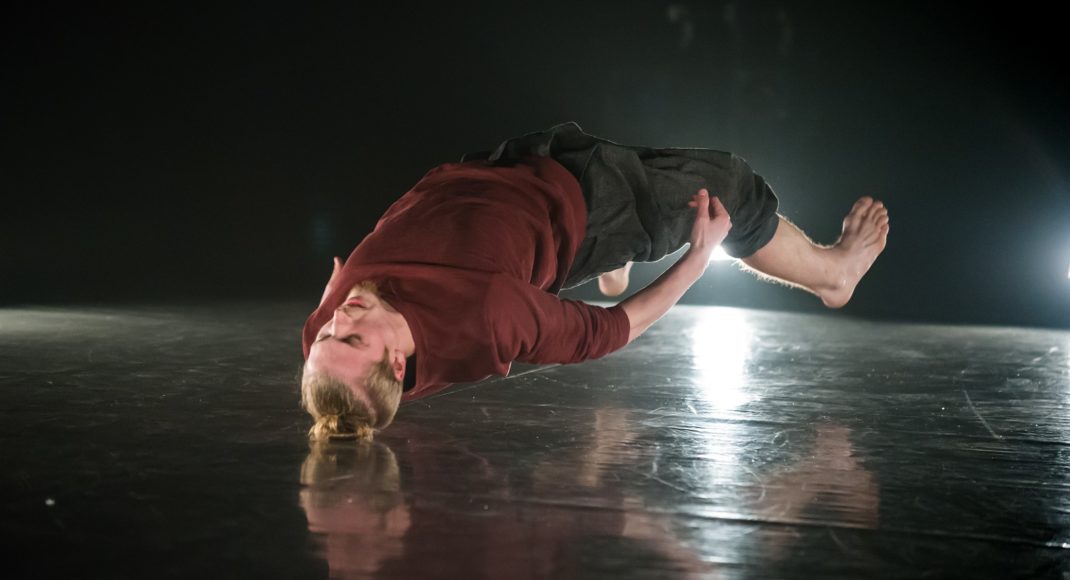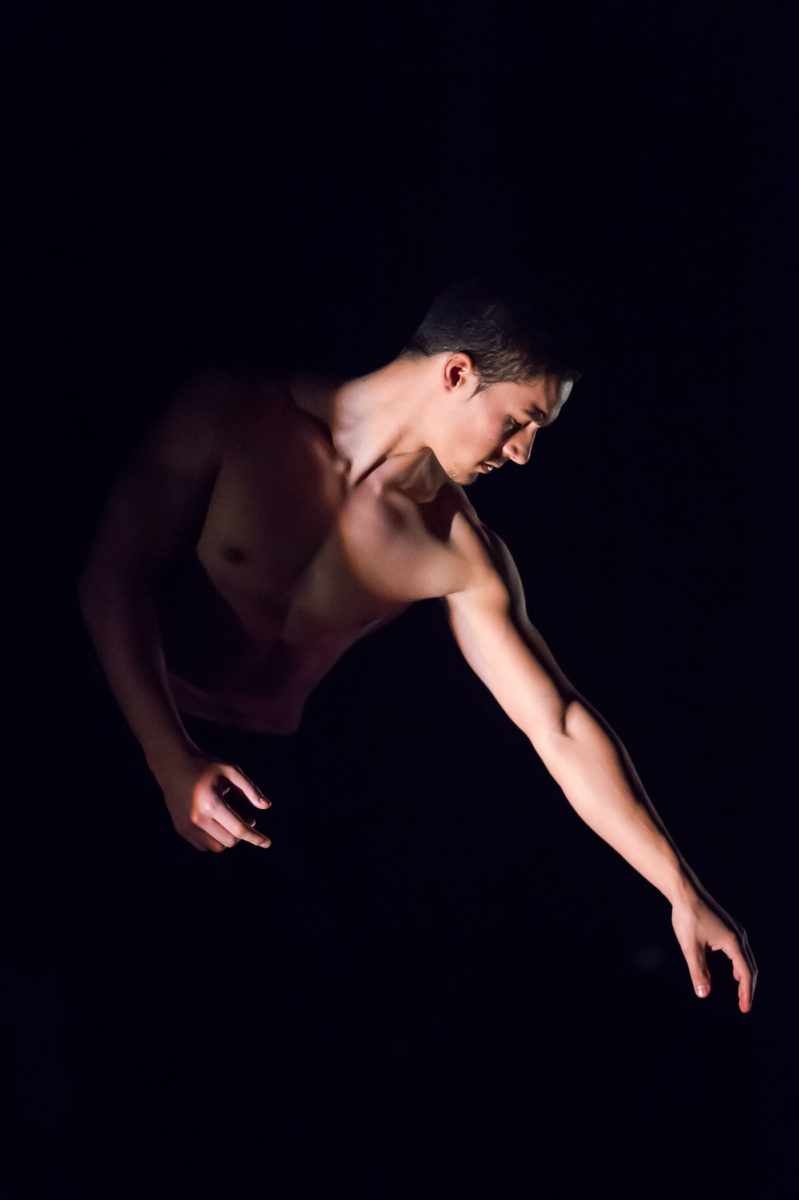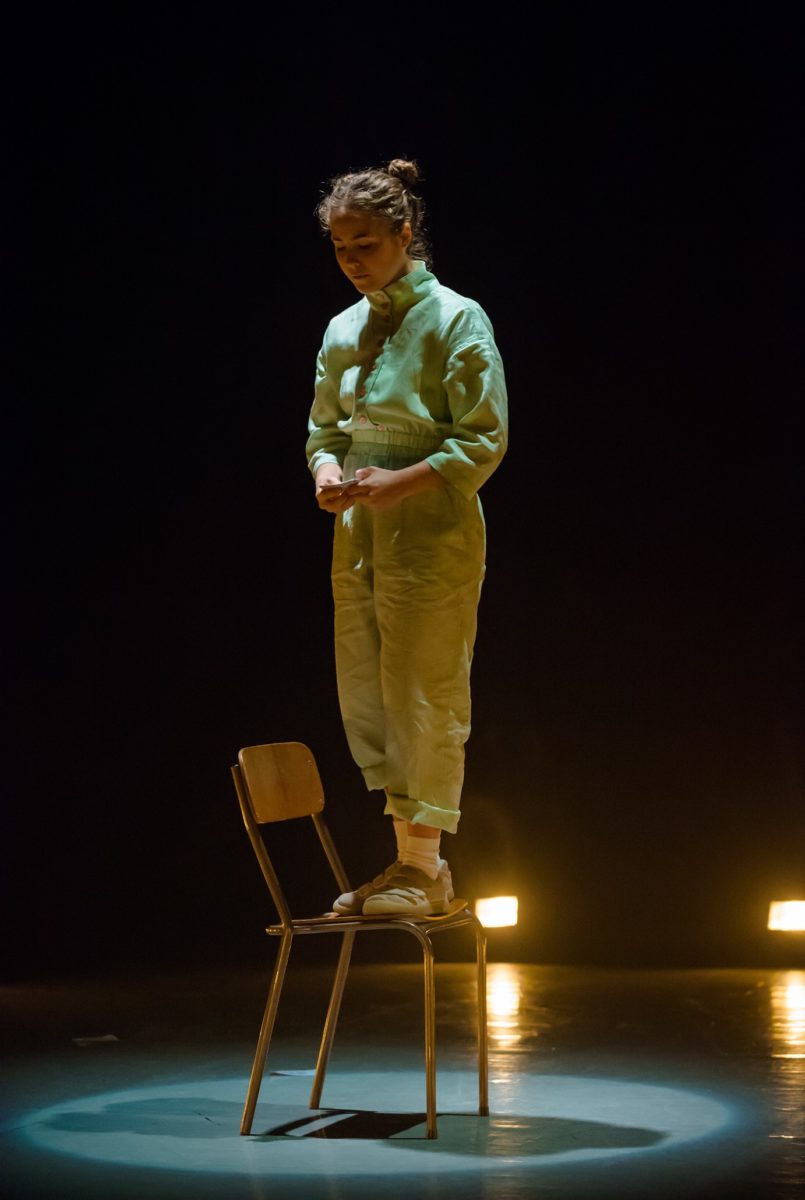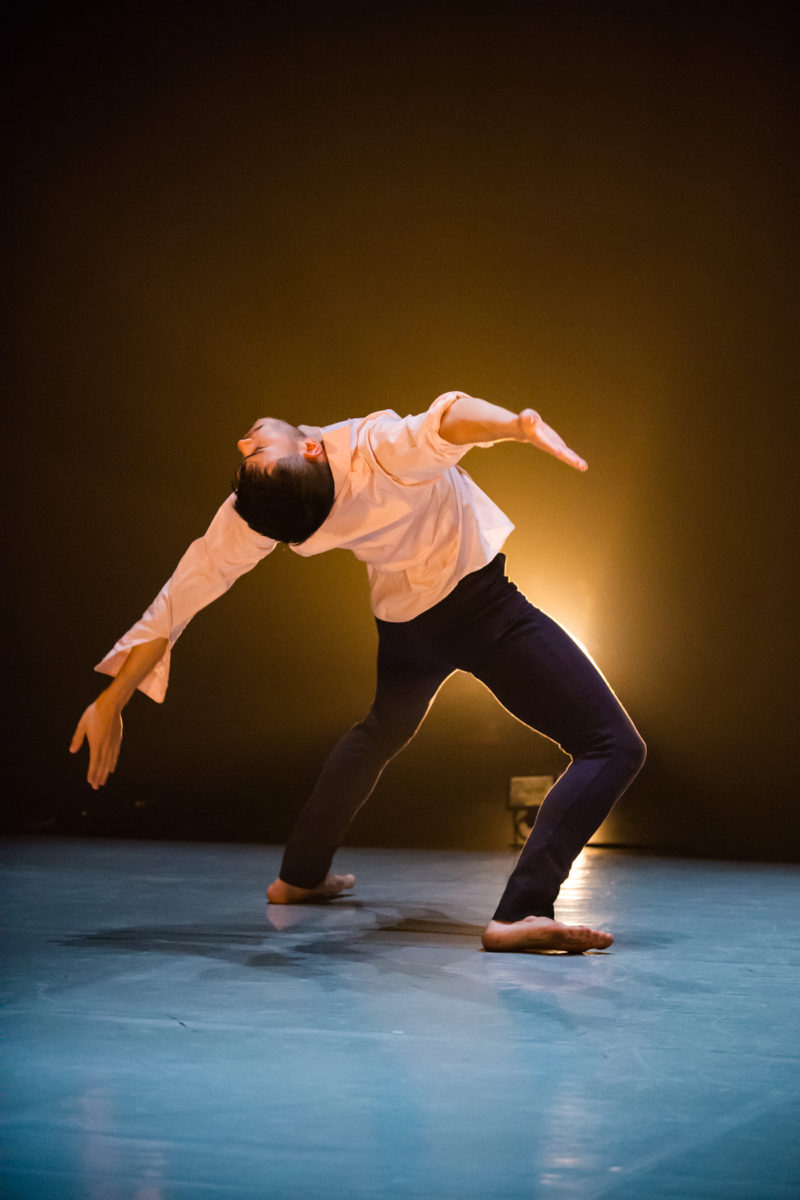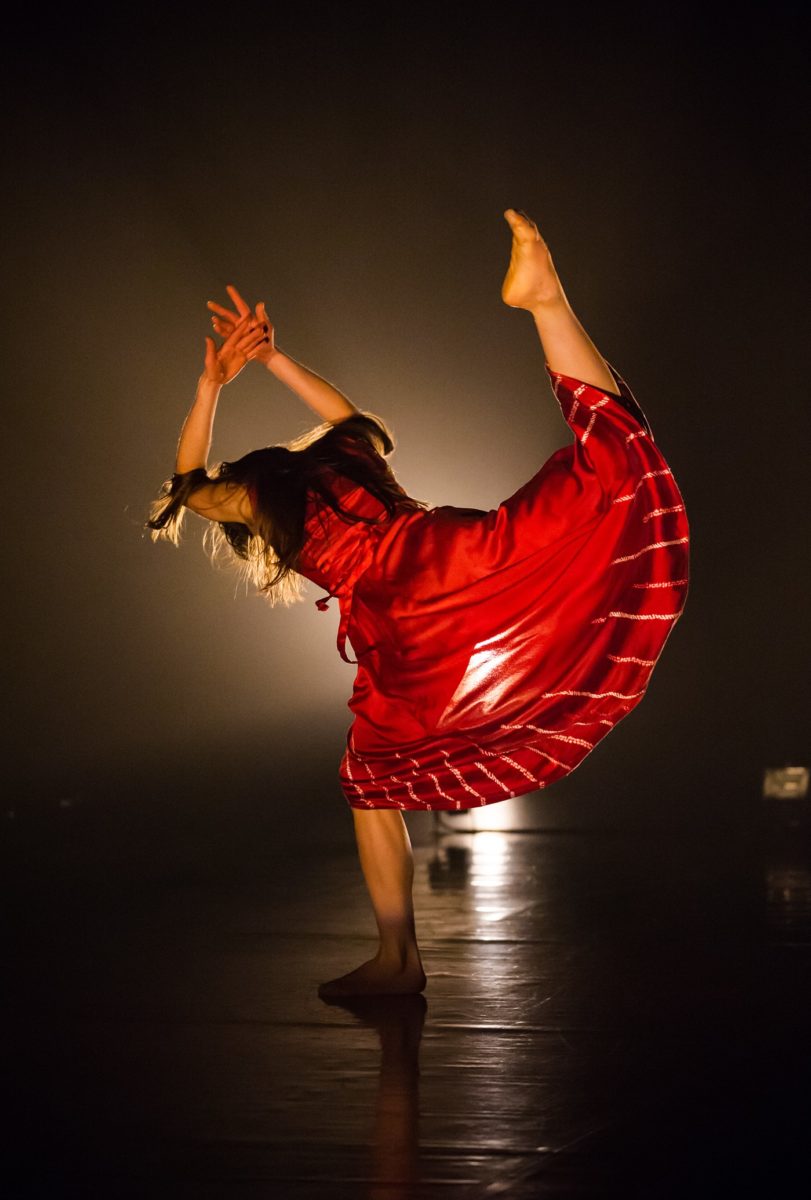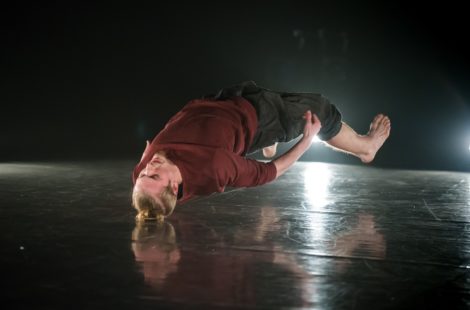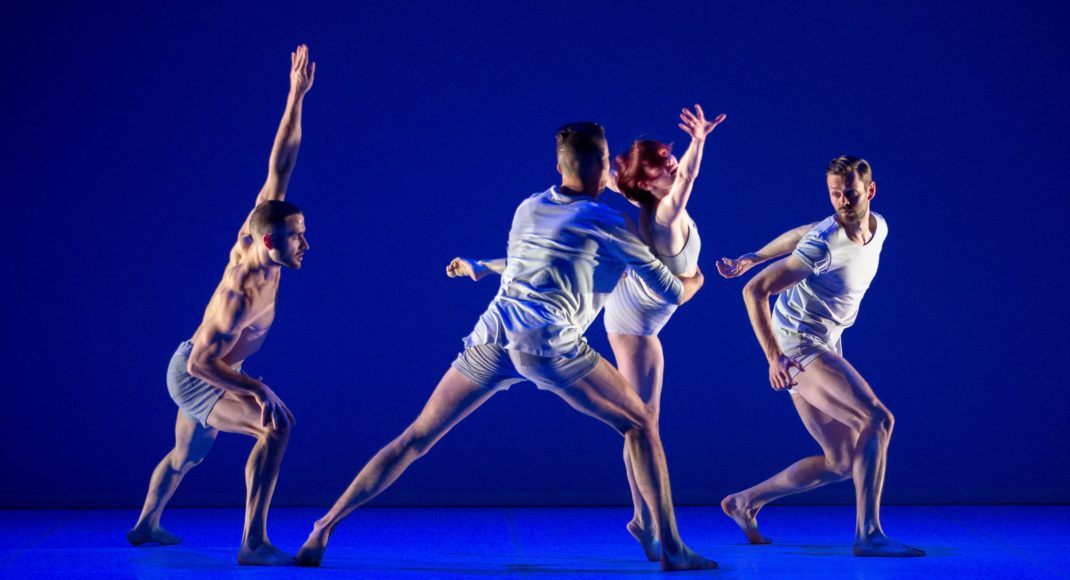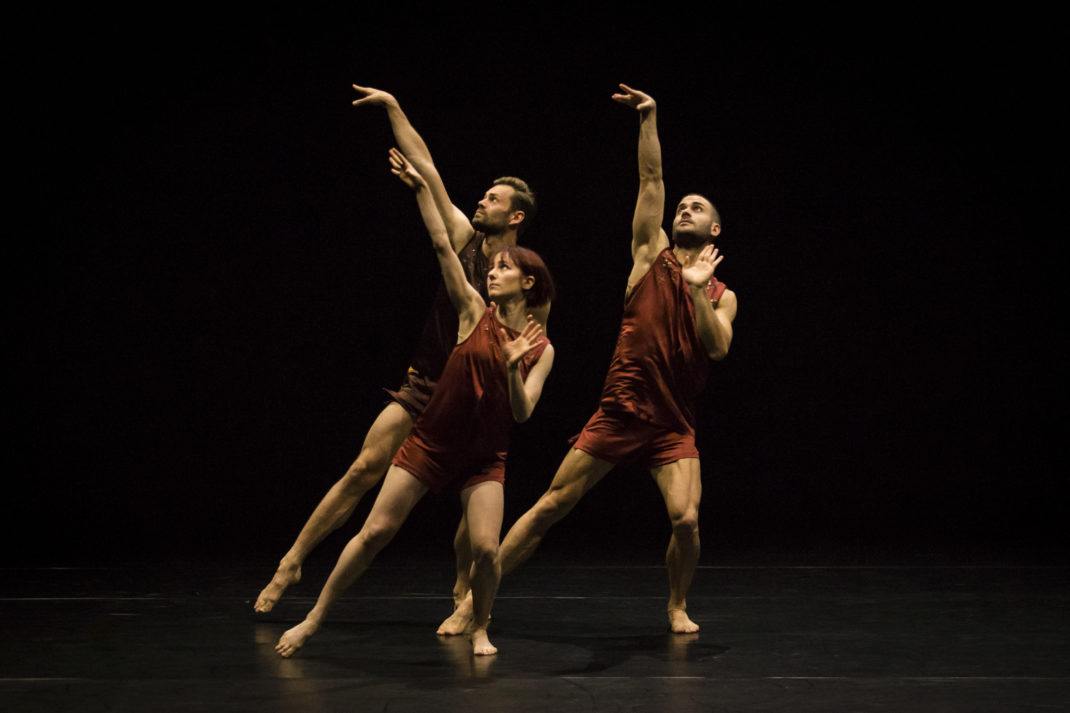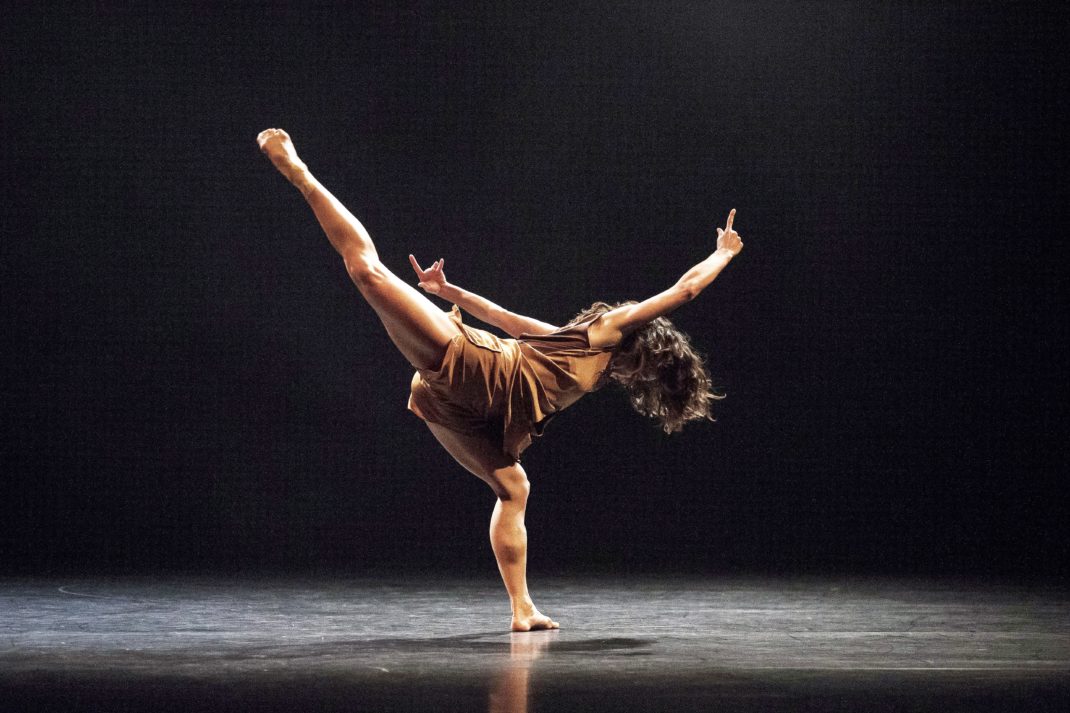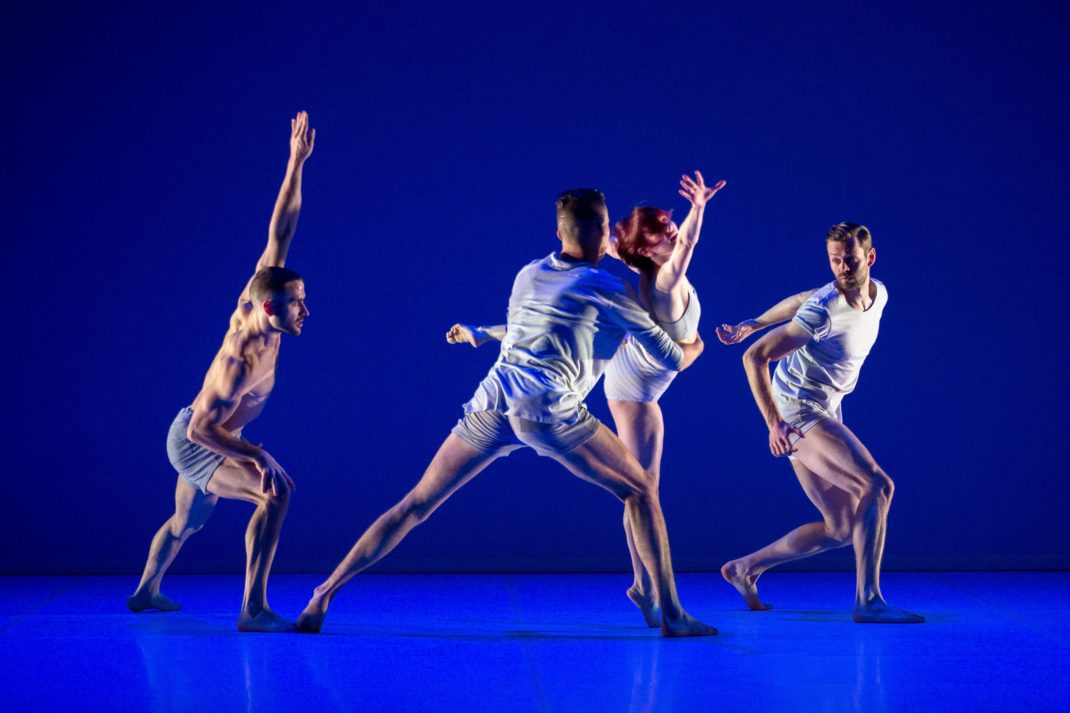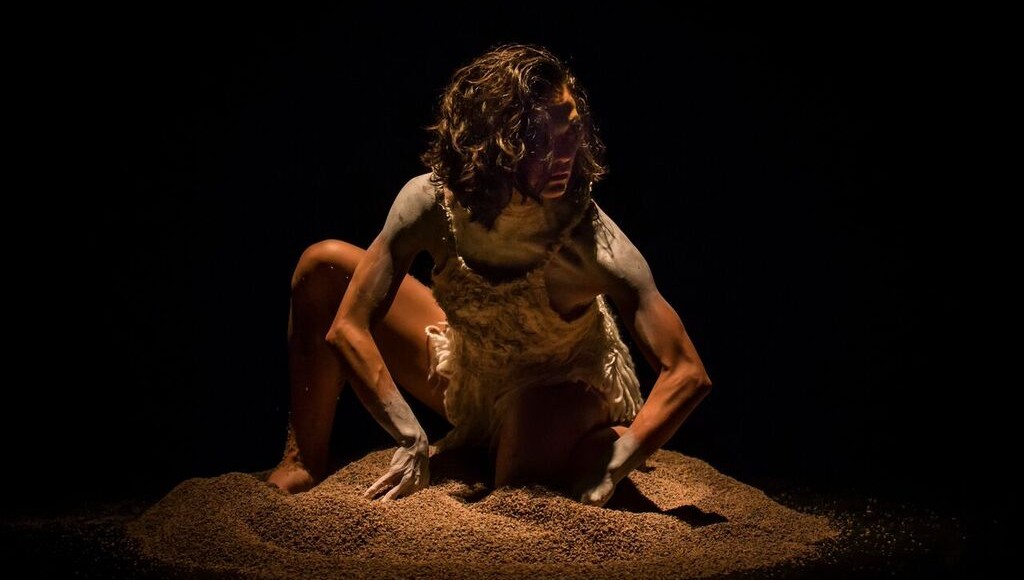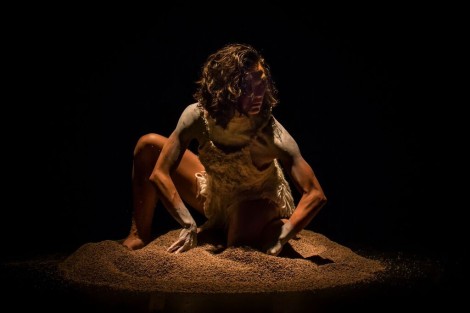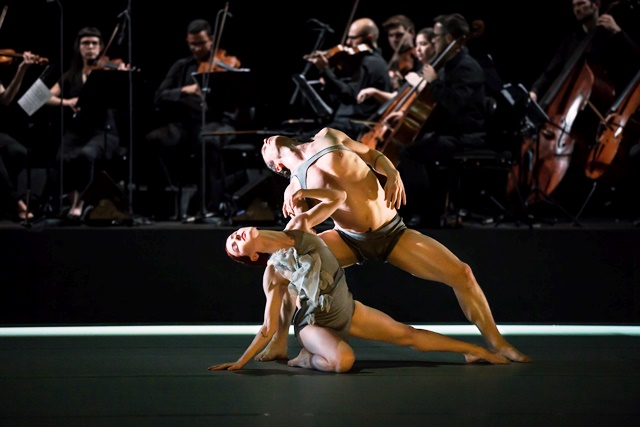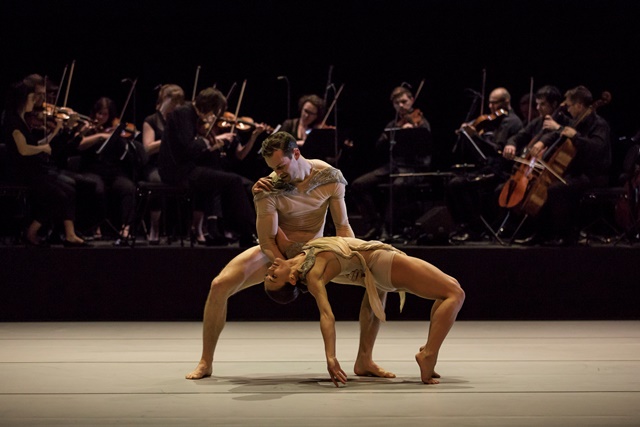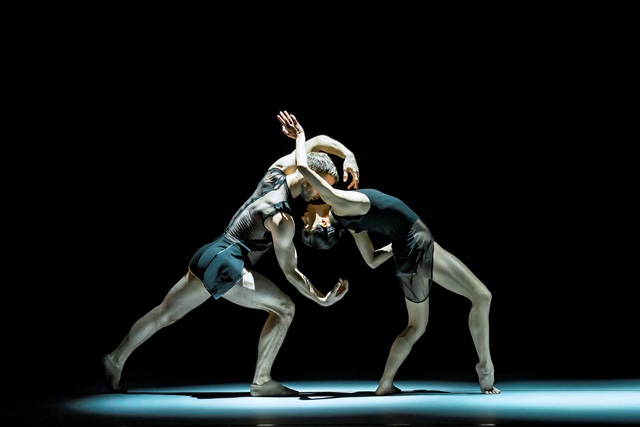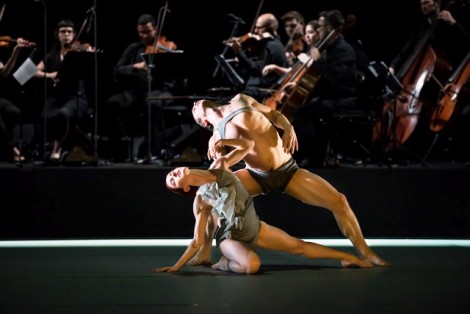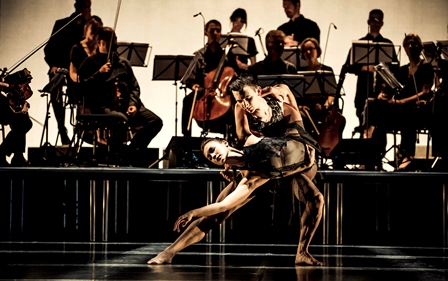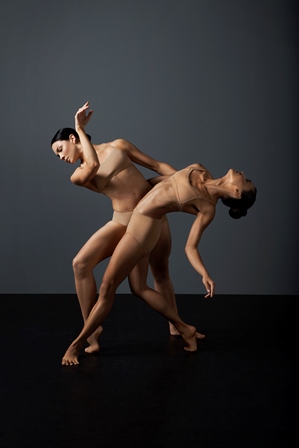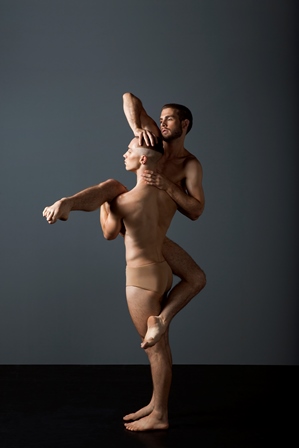1 September 2018, Canberra Theatre
In his first full-length work for several years, Rafael Bonachela has made a startling, extraordinarily powerful dance piece to an original score by Nick Wales (extra music by Peteris Vasks), with lighting from the remarkable Damien Cooper and production design from David Fleischer. The title ab [intra] (Latin: from within) we are told refers to ‘the energy transfer between the internal and the external’. The external energy is absolutely clear from beginning to end in ab [intra]. The internal aspect giving rise to the external we can only ponder. But Bonachela likes us to ponder (I think).
Choreographically the piece has two main duets, several shorter duets and trios, a major solo, and several sections for the entire company. The standout section for me was the duet between Charmene Yap and Davide Di Giovanni. The partnering was spectacular, as was the energy of the relationship between the two dancers. It was almost R & J à la Bonachela. I especially admired it for the clarity of movement it contained. The duet that preceded it, danced by Janessa Dufty and Izzac Carroll, also had some amazing partnering and it was impossible not to be stunned by the contortions of the body that it contained. How did those two dancers get into and then extract themselves from some of those moves? But quite honestly I preferred the cleaner, and yet still highly physical, look of the Yap/Di Giovanni duet.
![Charmene Yap and Davide Di Giovanni in 'ab [intra]', Sydney Dance Company, 2018. Photo: Pedro Greig](https://michellepotter.org/wp-content/uploads/2018/09/ab_intra_180511_0483_Charmene-Yap_Davide-Di-Giovanni_byPedroGreig-1070x713.jpg)
Another choreographic highlight was a solo danced by Nelson Earl. Earl emerged to take centre stage from a line of dancers who walked solemnly onto the performance space to stand in a row around the back and sides of the stage. His solo was characterised by stretched lines of the body and was largely without the curving fluidity of much of the rest of the choreography. At times I even started to think of Charlie Chaplin’s rather eccentric style of moving! But Earl performed with great panache and the rather different look of the choreography was refreshing.
I continue to admire the way Rafael Bonachela handles large groups of dancers. In ab [intra] there were several occasions when the whole company (or sometimes almost the whole company) were onstage together. It is fascinating to see how at times Bonachela has his larger groups of dancers look like a collection of individuals in different poses, making different moves, only for the group suddenly to be moving in unison. It is also fascinating to look harder at what the dancers are doing because it often is that what looks different is actually the same move done with back to the audience, or facing another direction.
![Dancers of sydney Dance Company in 'ab [intra]', 2018. Photo: © Pedro Greig](https://michellepotter.org/wp-content/uploads/2018/09/2018-ab-intra-byPedroGreig-1070x535.jpg)
As far as staging went, ab [intra] was distinguished by a certain restrained power. The lighting was always quite startling and consisted variously of haze, brightness, strong downlights, and occasionally a bank of small, bright lights that moved up and down limiting and then expanding on the space the dancers occupied. Costuming was quite minimal in appearance. Everything added to the unfolding of the work.
In a brief conversation I had earlier with Bonachela about ab [intra] he mentioned that he hoped the work might continue to be part of the Sydney Dance Company repertoire. I think it is probably one of those ‘giving’ works in which audiences will see more on second and subsequent viewings. So I hope Bonachela’s wish for it to continue to be shown is realised. At times it seemed slightly too long (at 70 mins) but mostly the strong staging, the remarkable and constantly changing look of the choreography, and the exceptional physicality of the dancers made it one of Bonachela’s (and Sydney Dance Company’s) strongest works to date.
Michelle Potter, 3 September 2018
Featured image: Nelson Earl in ab [intra], Sydney Dance Company 2018. Photo: © Pedro Greig
